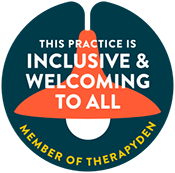Obsessive-Compulsive Disorder (OCD) can be deeply distressing for both the child or teen experiencing it and the family supporting them. At Anchor Therapy, our OCD therapists often meet parents who feel overwhelmed, confused, or even helpless as they try to understand their child's behaviors whether it is constant hand-washing, repeated questioning, or an intense need for things to be "just right." OCD in children can show up differently than in adults and early intervention is key to helping them manage the intrusive thoughts and compulsive behaviors that interfere with daily life.
Supporting a child with OCD requires more than just patience- it calls for informed, compassionate strategies that balance empathy with structure. From a therapeutic standpoint, we emphasize the importance of understanding the disorder, recognizing what is driven by anxiety versus defiance, and learning tools that empower both child and parent. In this blog, we will explore how to approach OCD with clarity and confidence, including how mental health counseling can support lasting change and provide relief for the whole family system.












